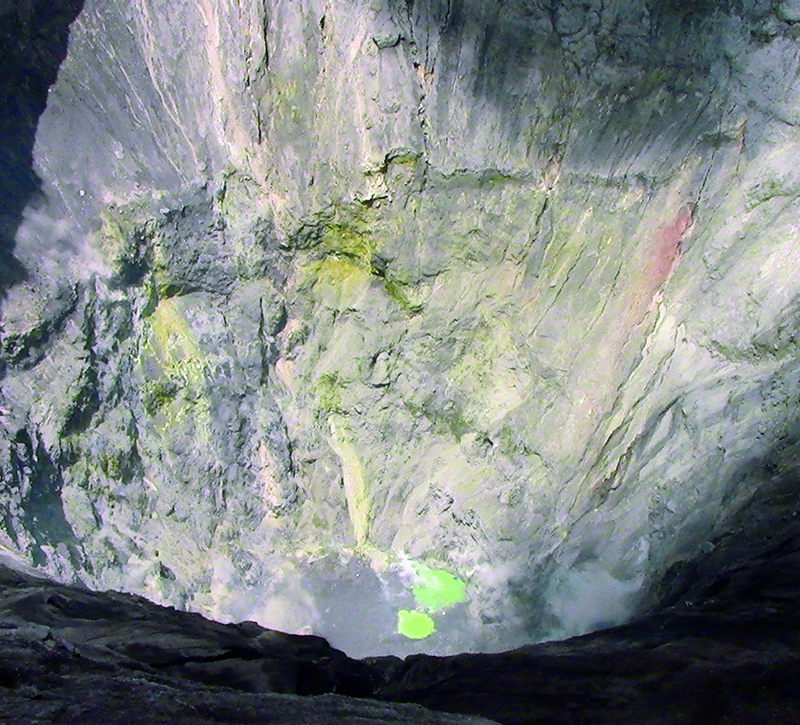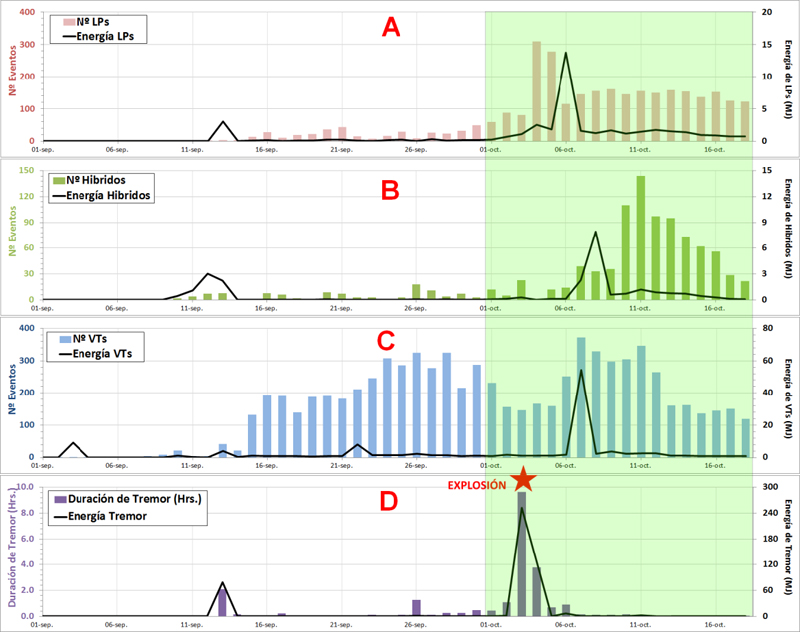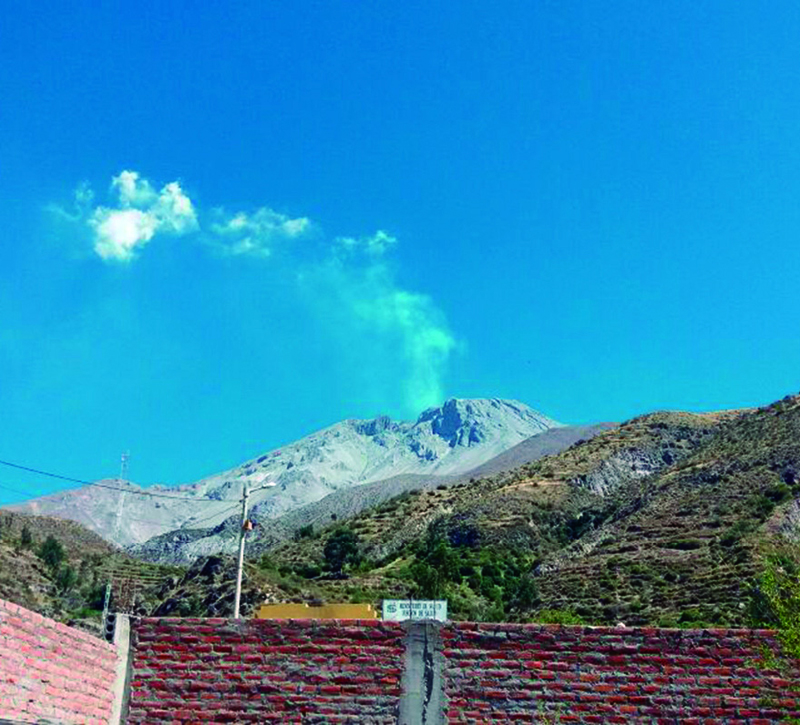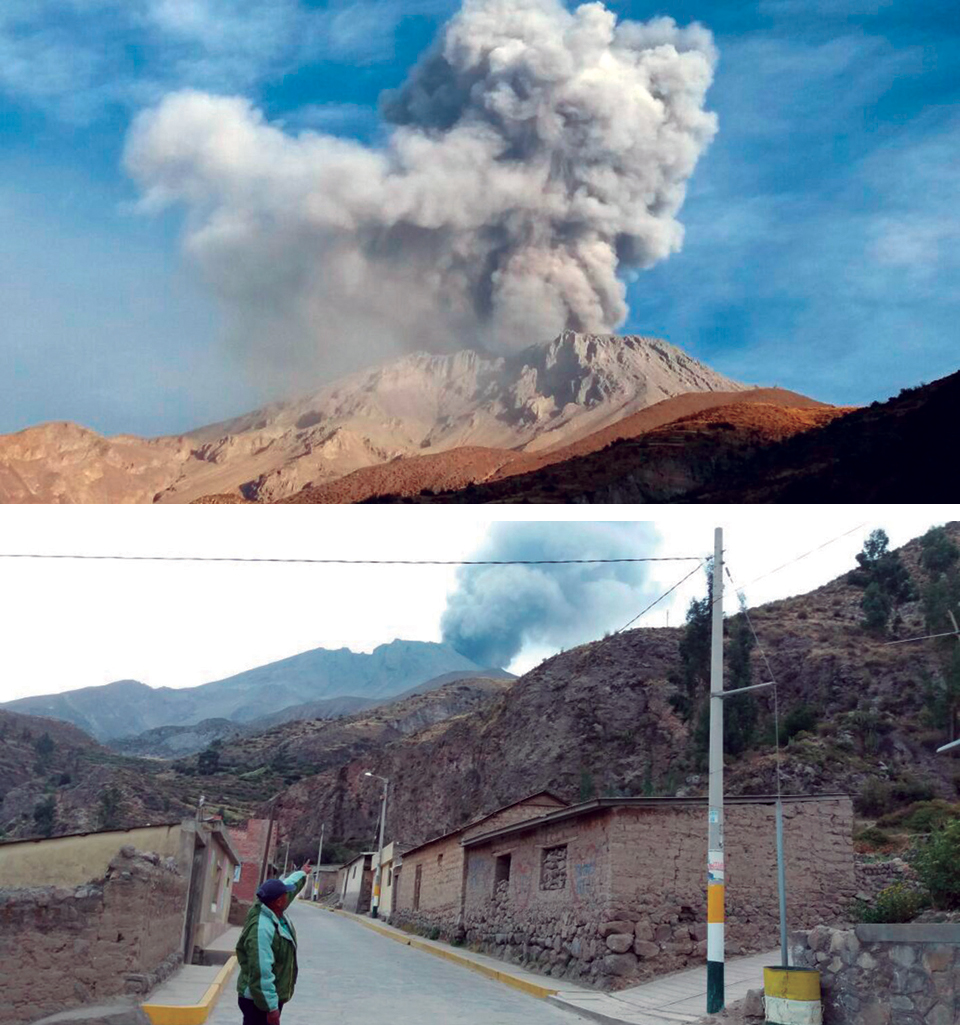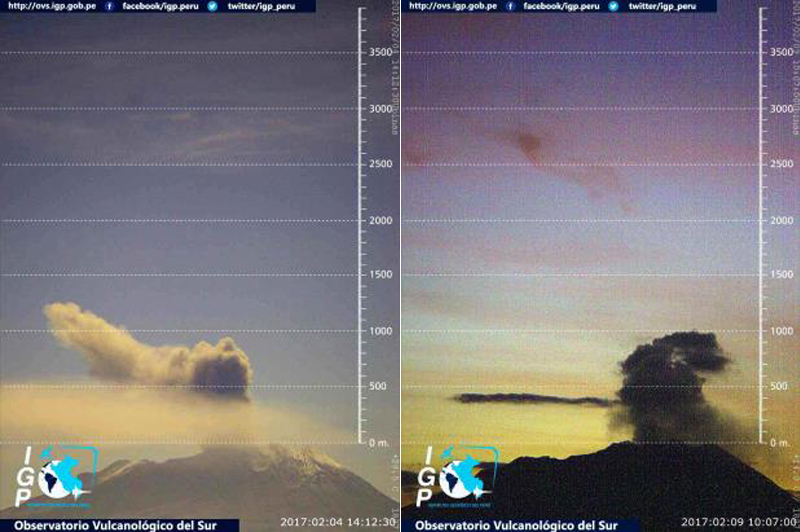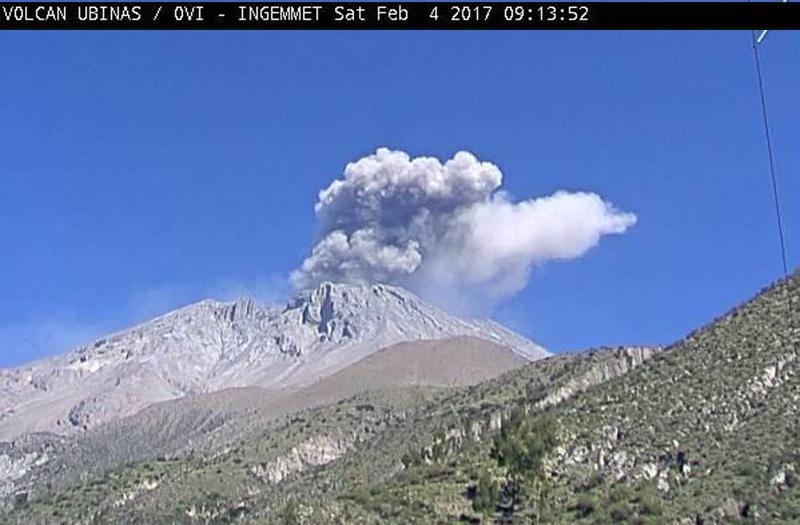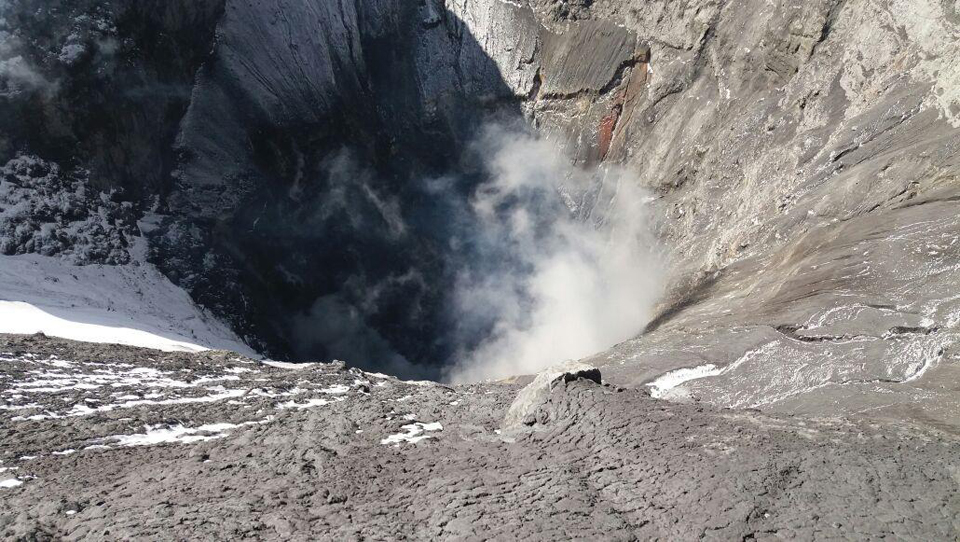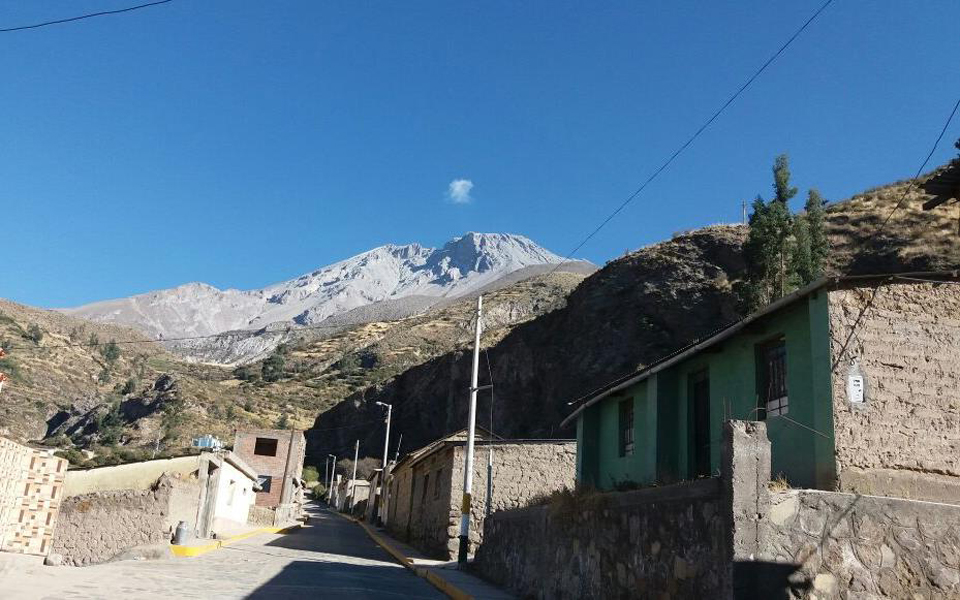Report on Ubinas (Peru) — October 2017
Bulletin of the Global Volcanism Network, vol. 42, no. 10 (October 2017)
Managing Editor: Edward Venzke.
Edited by A. Elizabeth Crafford.
Ubinas (Peru) Intermittent ash explosions during September 2016-February 2017
Please cite this report as:
Global Volcanism Program, 2017. Report on Ubinas (Peru) (Crafford, A.E., and Venzke, E., eds.). Bulletin of the Global Volcanism Network, 42:10. Smithsonian Institution. https://doi.org/10.5479/si.GVP.BGVN201710-354020
Ubinas
Peru
16.345°S, 70.8972°W; summit elev. 5608 m
All times are local (unless otherwise noted)
Ubinas is an active stratovolcano in southern Peru about 70 km E of the city of Arequipa. Holocene lava flows cover its flanks, and the historical record since the mid-1500's contains evidence of minor explosive eruptions, debris avalanches, tephra deposits, phreatic outbursts, and pyroclastic flows and lahars. An eruptive episode that began with phreatic explosions on 1 September 2013 lasted through 27 February 2016, producing numerous small ash emissions, several large explosions with ash plumes that rose above 10 km altitude, large SO2 anomalies, evacuations, and several millimeters of ashfall in surrounding villages. Significant MIROVA thermal anomalies first appeared in mid-June 2015 and persisted through January 2016. A smaller eruptive episode described below began on 13 September 2016 and continued with intermittent explosive activity through 2 March 2017. Information is provided by the Instituto Geofísico del Perú, Observatoria Vulcanologico del Sur (IGP-OVS), the Observatorio Volcanológico del INGEMMET (Instituto Geológical Minero y Metalúrgico) (OVI-INGEMMET), and the Buenos Aires VAAC (Volcanic Ash Advisory Center).
After activity subsided at the end of February 2016, Ubinas remained quiet through August 2016, with only sporadic steam and gas emissions, and very low levels of seismicity. Seismicity increased again beginning on 9 September, and the first ash emission of a new episode was reported on 13 September 2016. An explosion on 3 October released a significant ash plume that rose 2 km above the 5,672-m-summit. Four additional explosions with minor ash emissions were reported in November, and one occurred on 6 December. Webcams captured images of sporadic low-density ash emissions throughout February 2017, with the last report of possible emissions on 2 March 2017. Emissions of steam and gas and seismicity decreased throughout April 2017, and IGP-OVS lowered the alert level to Green by the end of May. Ubinas remained quiet through September 2017.
Activity during April-December 2016. After the small ash emission of 27 February 2016, seismicity at Ubinas dropped to very low levels of a few events per day (BGVN 41:10, figure 40). Sporadic steam emissions with small quantities of bluish magmatic gases rose no more than a few hundred meters above the summit during March-August 2016; there were no reports of ash emissions. A small seismic swarm of about 100 earthquakes was recorded on 5 April. The first "tornillo" type earthquakes seen in several months appeared beginning on 4 June, indicating to IGP-OVS the beginning of a new eruptive cycle. The lagoon that had formed at the bottom of the summit crater due to rains earlier in the year began to disappear as the dry season approached (figure 41).
Beginning on 9 September 2016, both OVI and OVS noted an increase in seismic activity of LP, hybrid, and VT-type events (figure 42). On 13 September, OVS reported that steam plumes rose higher than 1,000 m above the summit for the first time in many months, and a minor ash emission was observed. OVI reported possible ash emissions in weekly reports on 12, 17, and 24 September. Emissions of bluish gas and steam were typical for the remainder of September (figure 43).
Both OVI and OVS reported ash emissions from explosions on 3 October 2016 (figure 44). Seismic tremor, associated with ash emissions, lasted for nine and a half hours. The ash plume drifted NE, E, SE, and SW up to 2 km above the summit, according to OVS. Fumarolic activity then returned, with steam and bluish gases rising no more than 1,500 m above the crater rim for the remainder of October. The Buenos Aires VAAC noted the eruption reported by IGP, but was not able to identify volcanic ash from satellite data under clear skies. After peaking in early October at several hundred events per day, seismicity declined to below 50 events on 21 October, and then rose slightly to around 200 events per day for the rest of the month. Steam and gas emissions remained less than 500 m above the summit.
Three explosions with minor ash and gas (mostly SO2) were reported by IGP-OVS on 8 November (local time). NASA Goddard Space Flight Center reported a significant SO2 emission associated with this event. The ash plume rose to about 1,500 m above the crater rim (about 7.2 km altitude). Seismicity remained high, with 250-350 events per day for several days after the explosion before declining back to around 150 events per day by 15 November. Another explosion, with minor ash emissions that rose 500 m, was reported by both OVS and OVI on 17 November 2016. After a small spike in seismicity between 23 and 29 November, the number of seismic events dropped below 50 per day. OVS reported a small ash emission that rose 100 m above the summit and drifted NW on 6 December 2016. OVI noted a modest increase in seismicity between 6 and 15 December, but only sporadic emissions of water vapor and gas were detected for the remainder of the month.
Activity during January-September 2017. Gas and steam emissions remained below 500 m above the crater rim during January 2017. OVS reported an explosion at 0223 on 24 January, but could not confirm ash emissions due to darkness. Occasional emissions of steam and gas rose as high at 2 km above the summit crater, but they generally remained below 500 m. OVI observed five lahars during January, but no damage was reported. Seismicity remained below 60 events per day during the month, except for a few days during 8-12 January when the frequency increased to 100-150 events per day.
OVS reported sporadic low-density ash emissions throughout February 2017 (figure 45). They were accompanied, occasionally, by water vapor and bluish gas, and did not rise more than 1,500 m above the summit crater. Weather clouds obscured the summit for much of the month. OVI reported minor ash emissions on 4, 10, 14, and 18 February (figure 46). Seismicity fluctuated throughout the month from values as high as almost 70 events per day (8 February) to fewer than 10 events per day (10-19 February).
OVS reported only magmatic gas and steam emissions (with no ash) during March 2017, with plumes rising to a maximum height of 300 m above the summit crater. OVI noted possible diffuse ash emissions on 1 and 2 March, but only steam and gas emissions for the remainder of the month. They reported variable seismicity with the frequency of daily events ranging from less than 10 per day to almost 70, averaging about 30 events per day.
Seismic energy decreased significantly during April 2017. Sporadic steam emissions reached maximum heights of only a few hundred meters above the crater. This relative quiet enabled OVS scientist Melquiades Álvarez to make a brief inspection of the summit crater on 14 April where he observed intermittent steam emissions rising from the base of the summit crater (figure 47). No ash emissions were reported during April. OVI reported that the number of seismic events dropped consistently during April from a high of 20 daily events on 1 April, to fewer than 5 events per day at the end of the month.
The reduction in activity continued during May 2017; steam and gas emissions became more sporadic and were rarely reported rising above 500 m over the summit crater. IGP-OVS reduced the alert level from Yellow to Green (2 to 1 on a 4-level scale) during the second half of the month. Seismicity reported by OVI fluctuated between 2 and 14 daily events. Ubinas remained quiet from June through September 2017, with only occasional minor fumarolic activity of steam or magmatic gas plumes that rose a few hundred meters above the summit crater (figure 48). Frequency of seismic events remained below 20 events per day through August and dropped to less than 10 per day in September.
Geological Summary. The truncated appearance of Ubinas, Perú's most active volcano, is a result of a 1.4-km-wide crater at the summit. It is the northernmost of three young volcanoes located along a regional structural lineament about 50 km behind the main volcanic front. The growth and destruction of Ubinas I was followed by construction of Ubinas II beginning in the mid-Pleistocene. The upper slopes of the andesitic-to-rhyolitic Ubinas II stratovolcano are composed primarily of andesitic and trachyandesitic lava flows and steepen to nearly 45°. The steep-walled, 150-m-deep summit crater contains an ash cone with a 500-m-wide funnel-shaped vent that is 200 m deep. Debris-avalanche deposits from the collapse of the SE flank about 3,700 years ago extend 10 km from the volcano. Widespread Plinian pumice-fall deposits include one from about 1,000 years ago. Holocene lava flows are visible on the flanks, but activity documented since the 16th century has consisted of intermittent minor-to-moderate explosive eruptions.
Information Contacts: Instituto Geofisico del Peru, Observatoria Vulcanologico del Sur (IGP-OVS), Arequipa Regional Office, Urb La Marina B-19, Cayma, Arequipa, Peru (URL: http://ovs.igp.gob.pe/); Observatorio Volcanologico del INGEMMET, (Instituto Geológical Minero y Metalúrgico), Barrio Magisterial Nro. 2 B-16 Umacollo - Yanahuara Arequipa (URL: http://ovi.ingemmet.gob.pe); Buenos Aires Volcanic Ash Advisory Center (VAAC), Servicio Meteorológico Nacional-Fuerza Aérea Argentina, 25 de mayo 658, Buenos Aires, Argentina (URL: http://www.smn.gov.ar/vaac/buenosaires/inicio.php?lang=es).


